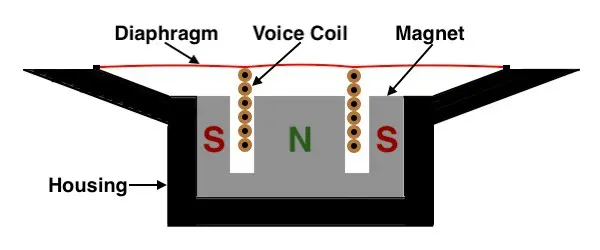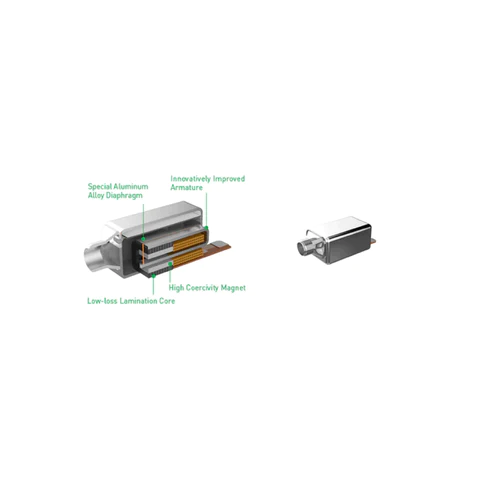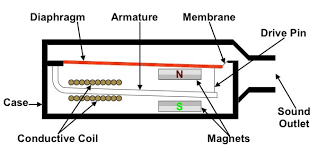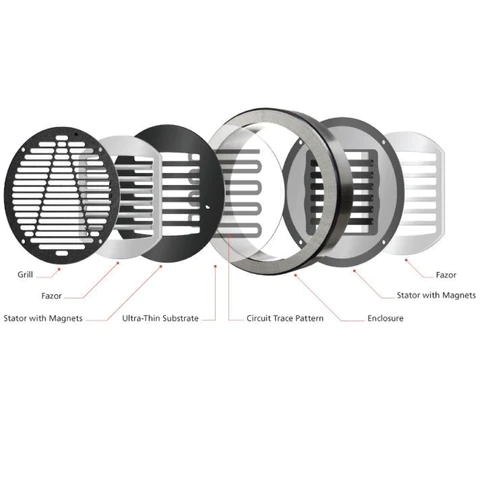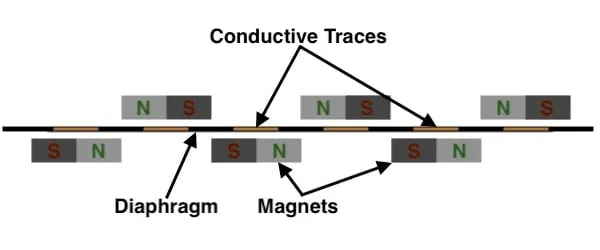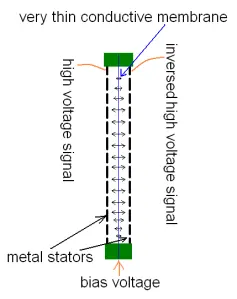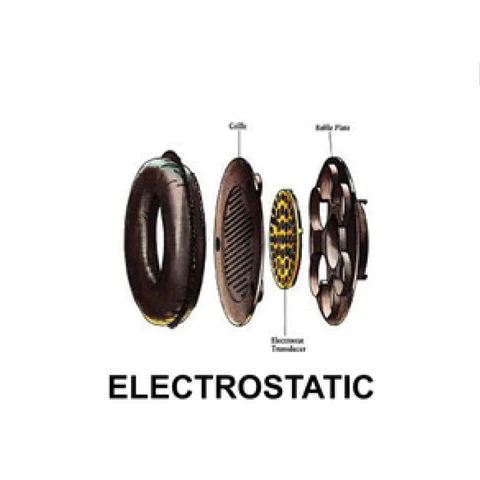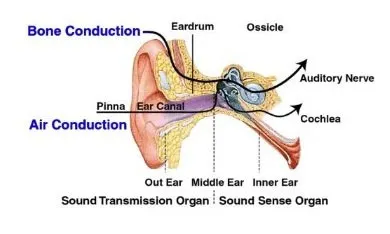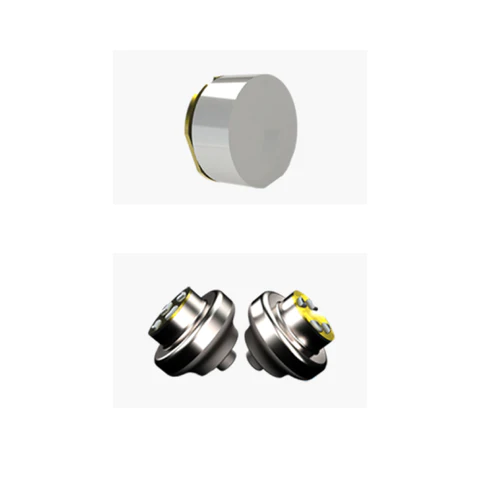IEM Driver Technology
- Alexander aka KUBIK
- Jan 20, 2024
- 13 min read
Updated: Feb 12, 2024
Introduction to IEM Drivers
Different Types of Drivers in IEMs
No matter what method you choose to enjoy audio, whether it be in-ear monitors, headphones, or speakers, the quality of the sound performance will always rely on the driver used. In the case of IEMs and headphones, there are various types of drivers available such as dynamic drivers, balanced armature drivers, planar magnetic drivers, and electrostatic drivers. Each of these drivers has its unique characteristics, advantages, and disadvantages, which contribute to the overall sound output. In this article, we will explore the features and qualities of each driver type, and also provide some of our top recommendations. So, let's get started without further delay.
Drivers are tiny devices found within your IEMs that deliver sound directly to your ears, similar to miniature speakers. They convert electrical signals into audible sound waves, which are then transmitted to your ears. IEMs can have either single drivers, with one driver per earpiece, or multiple drivers, with several of the same type or a combination of different types in each earpiece. Except for electrostatic drivers, IEM drivers operate on the principle of electromagnetism, where an electromagnetic force is generated between charged particles. This force pushes or pulls anything with an electric charge, including both electric and magnetic forces. These drivers typically consist of magnets, voice coils, and diaphragms. The diaphragm is responsible for pushing air and creating the sound you hear.
Dynamic Drivers:
Let's begin with the most fundamental and widely employed type of drivers, which are Dynamic Drivers. These are virtually ubiquitous and have enjoyed extensive usage for an extended period.
You can encounter Dynamic Drivers in a variety of devices, including headphones, in-ear monitors (IEMs), speakers, and even true wireless stereo (TWS) earphones.
Dynamic drivers are engineered with a membrane diaphragm coil that spans a voice coil. They also incorporate an internal high-power electromagnetic circuit that facilitates the rapid movement of the drivers. When an electrical signal is directed to the dynamic driver, the electromagnetic circuit activates, generating a robust magnetic field. This magnetic field induces diaphragm motion, thereby producing sound by vibrating the air surrounding the diaphragm.
Manufacturers have tailored dynamic drivers by utilizing diverse materials for their diaphragm coils, such as Beryllium, Liquid Crystal Polymer (LCP), Carbon Nanotube (CNT), and DLC (diamond-like carbon). It's common knowledge that every metal and material possesses its unique rigidity, weight, and density, which each impact sound output in distinct ways. Generally, materials with greater membrane material surface tension tend to respond more swiftly. This implies that high-density and lightweight materials offer a clean output with reduced distortion and enhanced clarity in the resulting sound.
Pros of Dynamic Drivers:
Dynamic drivers are capable of delivering powerful low-frequency performance(producing impactful low-end performance)
Dynamic drivers are typically more cost-effective (usually cheaper) compared to other driver types.
A single driver can encompass the entire audible frequency range.
A single driver can cover the entire audible frequency range.
Least expensive; easy to produce
Capable of covering a large frequency range
Cons of Dynamic Drivers:
They are susceptible to distortion (at high volumes)
Dynamic drivers usually have larger physical dimensions compared to other driver types.
Dynamic drivers are susceptible to driver flex.
Loss of detail
Balanced Armature Drivers:
Balanced Armature drivers, initially designed for hearing aids due to their compact and lightweight nature, are not renowned for their expansive frequency range. Nevertheless, their adaptable characteristics make them well-suited for catering to the specific requirements of those with hearing impairments. These diminutive drivers, some as small as 5mm on their longest dimension, find an ideal application in in-ear monitors (IEMs) due to their ability to accommodate multiple units within a single earpiece.
Numerous in-ear monitors employ multiple balanced armature drivers to achieve a broader frequency response. Each driver is meticulously calibrated for treble, midrange, or bass frequencies.
To further refine the audio experience, a crossover is employed to partition sound signals into distinct frequency bands, directing each band to the appropriate driver.
Balanced Armature drivers feature a coil-wound armature that takes on a U-shaped form, perfectly balanced between a pair of magnets. An electrical signal passing through the coil generates a magnetic field, inciting the armature to vibrate. This vibration, in turn, imparts motion to an aluminum diaphragm, producing sound. The hallmark of balanced armature drivers lies in their ability to deliver a pristine, sharp audio quality, particularly well-suited for midrange and high-frequency tones, albeit often at the expense of less pronounced bass response. This limitation arises from the fact that these drivers do not displace air to produce sound.
Balanced Armature drivers are prone to unwanted vibrations and distortion, necessitating a significant degree of damping to achieve a balanced frequency response. This damping can be achieved through the use of a dampening screen or material positioned between the armature and magnets. This serves to restrict armature movement, thereby mitigating or damping resonant peaks. However, it should be noted that this damping process does result in reduced driver output levels. On a positive note, since there is no requirement for air displacement, BA drivers offer superior sound isolation.
While some IEMs exclusively rely on balanced armature drivers, others incorporate a combination of balanced armatures and other driver types.
Balanced Armature drivers are capable of delivering exceptional resolution and outstanding sound performance in IEMs.
Pros of Balanced Armature Drivers:
Delivers crisp and clear high-frequency audio
Exceptional noise isolation capabilities
The compact size makes them perfect for IEMs
Compact size allows for the integration of multiple units in a single pair of IEMs.
Tunable and adjustable for specific frequency regions.
Minimal movement results in cleaner sound production with reduced distortion.
Cons of Balanced Armature Drivers:
Limited bass response
Tends to be relatively costly
Multiple drivers may be necessary to cover the entire audible frequency range
Challenging for a single BA driver to reproduce the entire audible frequency range.
Dynamic drivers, which involve more air movement, tend to deliver a more impactful bass response.
Planar Magnetic Drivers:
Planar magnetic drivers are indeed a unique and fascinating technology in the world of audio drivers. Your description provides a good overview of how they work and their advantages. Here's a summary of the key points:
Flat Diaphragm with Embedded Wires: Planar magnetic drivers use a flat and thin diaphragm with embedded wires. This diaphragm is the key component responsible for producing sound.
Magnet Arrays: The diaphragm is sandwiched between two arrays of evenly spaced magnets. These magnets create a strong and consistent magnetic field.
Electromagnetic Interaction: An electric current flows through the embedded wires in the diaphragm, creating an electromagnetic field. This field interacts with the magnetic field created by the surrounding magnets, causing the diaphragm to move.
Deep Bass Response: Planar magnetic drivers are known for their deep bass response. This is due to the large surface area of the diaphragm and the powerful magnetic force, allowing for the movement of a significant volume of air.
Even Sound Distribution: Sound vibrations are evenly distributed across the diaphragm, leading to minimized distortion and improved sound quality.
Availability in Budget IEMs: While planar magnetic technology was traditionally associated with high-end audio equipment, it has become more accessible in recent years, including in budget in-ear monitors (IEMs). This wider availability allows more consumers to experience the benefits of planar magnetic drivers.
Impactful Bass and Detail: Planar magnetic drivers are capable of delivering impactful bass responses with excellent detail and resolution, making them a popular choice for audiophiles and music enthusiasts.
Power Requirements: Planar magnetic drivers may require more power to operate at their best performance. This is an important consideration when choosing amplification equipment.
Durability: One potential drawback is that planar magnetic drivers can be delicate, and care must be taken to protect them from damage.
Overall, planar magnetic drivers offer a unique combination of benefits, including exceptional sound quality, deep bass response, and even sound distribution. As technology advances and becomes more accessible, they are likely to continue gaining popularity among audio enthusiasts.
Planar magnetic drivers are a type of technology used in headphones and loudspeakers to reproduce sound. Here's a breakdown of the points you mentioned:
Clean, Powerful Sound: Planar magnetic drivers are known for their ability to produce clean and powerful sound. They can deliver audio with a high level of detail and accuracy.
Low Distortion: Planar magnetic drivers tend to exhibit less distortion in their output compared to other driver technologies, like dynamic drivers. This results in a cleaner and more faithful representation of audio.
Deep-Hitting and Impactful Bass: Planar magnetic headphones are often praised for their bass performance. They can produce deep and impactful bass, providing a satisfying low-end response that many audiophiles and music enthusiasts appreciate.
Fast and Precise Sound: Planar magnetic drivers are capable of responding quickly to changes in audio signals. This means they can reproduce audio with great precision and accuracy, making them well-suited for a wide range of music genres and audio applications.
It's important to note that planar magnetic technology is just one of several driver technologies used in audio equipment, and the specific characteristics of any audio device can also depend on its design, engineering, and tuning. When choosing audio equipment, it's a good idea to consider your personal audio preferences and the type of content you'll be listening to to find the best fit for your needs.
Pros of Planar Magnetic Drivers:
The qualities you've mentioned, "low distortion," "clarity," and "excellent bass response," are all highly desirable characteristics in audio equipment, particularly in headphones and speakers. Here's a brief explanation of each of these qualities:
Low Distortion: Low distortion means that the audio equipment can reproduce sound with minimal alteration or added noise. Distortion typically degrades the audio quality, so lower distortion levels lead to a more faithful and accurate reproduction of the audio source.
Clarity: Clarity in audio refers to the ability of the equipment to reproduce sound with precision and detail. Clear audio allows you to hear individual elements in the music or audio, making it easier to distinguish between different instruments or voices.
Excellent Bass Response: Bass response refers to how well the equipment handles and reproduces low-frequency sounds, particularly the deep and impactful bass notes. Excellent bass response means that the equipment can reproduce these low-frequency sounds with depth and accuracy, enhancing the overall listening experience, especially in genres where bass plays a prominent role.
To achieve these qualities in audio equipment, manufacturers often use advanced technologies, such as planar magnetic drivers, as mentioned earlier. However, the design, materials, and engineering of the equipment also play a crucial role in delivering low distortion, clarity, and excellent bass response.
When choosing audio equipment, it's essential to consider your personal preferences and the type of content you'll be listening to, as different equipment may excel in various aspects of sound reproduction. Reading reviews and listening tests can also help you find the audio equipment that best matches your desired qualities.
Cons of Planar Magnetic Drivers:
Planar magnetic drivers have some unique characteristics and requirements:
Delicate Nature: Planar magnetic drivers are relatively delicate compared to dynamic drivers, which are another common driver technology. They consist of a thin, lightweight diaphragm suspended in a magnetic field. Care should be taken to prevent physical damage to the diaphragm, as punctures or tears can affect performance.
Power Requirements: Planar magnetic drivers often require more power to achieve their best sound quality compared to dynamic drivers. They have a lower sensitivity, so they may need a dedicated headphone amplifier to reach their full potential. This means that they can benefit from high-quality amplification to deliver their best performance.
Expensive: Planar magnetic headphones and speakers tend to be more expensive than models with dynamic drivers. This is partly due to the complex manufacturing process and the use of specialized materials in their construction. The price can vary greatly depending on the brand and model.
Larger and Heavier: Planar magnetic drivers are typically larger and heavier than their dynamic counterparts. The size and weight of these drivers can affect the overall design and comfort of headphones or the size and portability of speakers. Some users prefer the spacious soundstage and detail offered by planar magnetic drivers, while others may find them less comfortable for extended use.
In summary, planar magnetic drivers offer high-quality audio performance, but they come with some trade-offs, including delicacy, increased power requirements, higher costs, and bulkier designs. Whether they are the right choice for you depends on your preferences and priorities in terms of audio quality and other factors such as portability and budget.
Electrostatic Drivers:
Unlike drivers that function through electromagnetic force, electrostatic drivers operate based on the principle of static electricity, specifically the absence of moving charges, to generate an electric field.
Within electrostatic drivers, a delicately thin and nearly weightless diaphragm is suspended between two metal plates known as stators. These plates are perforated to facilitate airflow, with one plate carrying a positive charge and the other a negative charge. When a sound signal is applied to these plates, an electric field is established. The sound signal induces the diaphragm to move towards and away from the plates due to the attractive and repulsive forces within the electric field.
As the diaphragm undergoes these movements, vibrations occur, causing air to be pushed through the perforations in the metal plates. This interplay of movements, combined with the continuous electrical signal driving the diaphragm, gives rise to the production of sound waves.
Electrostatic drivers are acclaimed for their ability to provide outstanding detail, treble extension, and broad frequency response. The uniform charging of the diaphragm by the electrostatic field ensures that sound vibrations are evenly distributed across its surface, minimizing distortion in the process. This unique mechanism contributes to the characteristic qualities of electrostatic drivers in delivering high-quality audio reproduction.
Pros of Electrostatic Drivers:
Small in size, easy to implement.
Excellent high-frequency band response.
Delivers an airy and detailed sound.
Clarity and detail
Lack of distortion
Small and lightweight
Wide frequency response
Cons of Electrostatic Drivers:
Tendency to drown out other drivers
Power requirements are usually high for EST drivers.
Expensive.
Full-frequency EST drivers are a rare sight in budget IEMs
Bone Conduction Drivers:
Bone conduction headphones revolutionize the way we experience audio by employing a distinctive mechanism that sets them apart from traditional headphone types. In the conventional setup, sound vibrations navigate through the air via a process known as air conduction. These vibrations travel down the ear canal, causing the ear drum and middle ear to vibrate. Subsequently, the vibrations make their way to the cochlea (inner ear), where they undergo conversion into electrical signals and are transmitted to the brain.
Bone conduction headphones, on the other hand, introduce a unique approach by excluding the outer and middle ear from the auditory process. Instead of traveling through the air, sound vibrations are directed through the bones of the skull, reaching the inner ear directly. Positioned in front of the ear or on the cheekbones, bone-conduction headphones deviate from the conventional ear-centric design. This unconventional structure renders them particularly advantageous for individuals with hearing impairments related to issues in the eardrum or middle ear, as bone conduction circumvents these specific areas.
An additional perk of bone conduction headphones lies in their design, allowing the ear canal to remain open. This openness enables users to maintain awareness of ambient sounds, enhancing situational awareness—a feature not commonly found in traditional headphones. However, it's worth noting that bone-conduction headphones may fall short of delivering the same level of sound quality as their counterparts in other headphone categories. Despite this drawback, the unique benefits they offer make them a preferred choice for those seeking alternatives based on their specific needs and preferences.
Hybrid Drivers Configuration:
In the ever-evolving world of in-ear monitors (IEMs), one term that has been gaining significant traction is "Hybrid Driver." This refers to the innovative approach where brands integrate two or more types of drivers into a single pair of IEMs. While the classic combination involves Dynamic Drivers (DD) and Balanced Armatures (BA), the landscape has expanded to include a fascinating array of driver types such as DD, BA, Electrostatic (EST), Planar, and even Balanced Coiled Drivers (BCD).
In the contemporary realm of audio technology, hybrid driver configurations have become the norm rather than the exception. This design philosophy allows brands to harness the unique strengths of different driver types and amalgamate them into a singular, impressive auditory experience for users. Picture this: a dynamic driver delivering a punchy, powerful bass response, balanced armatures offering exceptional mid-range and treble nuances, and EST drivers handling ultra-high frequencies with finesse.
The beauty of hybrid drivers lies in their ability to bring together the best of diverse acoustic worlds, offering users an unparalleled audio journey encapsulated in a single pair of IEMs. It's not just about combining components; it's about creating a symphony where each driver plays its specialized role, resulting in a harmonious and advanced sound profile.
As audio enthusiasts, we are witnessing a renaissance in IEM technology, where the marriage of different driver types isn't just a technical feat but a celebration of sonic possibilities. The era of hybrid drivers has ushered in a new dimension of auditory excellence, and we eagerly anticipate the continuous innovation that will shape the future of our listening experiences.
Embrace the fusion, and let the music resonate with you like never before.
Pros of Hybrid Drivers:
Versatility and Diversity: By incorporating multiple types of drivers into a single pair, the hybrid configuration allows users to experience the unique strengths of each driver technology. This versatility enables a more comprehensive and dynamic audio experience, accommodating a wide range of musical genres and content types.
Exceptional Sound Quality: One of the standout features of hybrid configurations is their ability to deliver exceptional sound quality. The combination of different driver types, such as balanced armature and dynamic drivers, synergizes to produce a well-rounded audio profile. This results in clear highs, rich mids, and powerful lows, contributing to a more immersive and enjoyable listening experience.
Customized Performance: Brands have the flexibility to tune each driver based on specific frequency bands, tailoring the performance to meet desired audio characteristics. This level of customization allows for precise control over the sound signature, catering to the preferences of diverse audiences. Whether it's emphasizing bass for a thumping low end or enhancing clarity for intricate details, hybrid configurations offer a customizable audio solution.
Optimized for Different Uses: The ability to fine-tune drivers makes hybrid configurations suitable for various applications. Whether you're a music enthusiast, a professional audio engineer, or a gamer, hybrid setups can be optimized to excel in different scenarios. This adaptability ensures that users can enjoy high-quality audio across a wide range of activities.
Technological Advancements: Hybrid driver technology continues to advance, with ongoing innovations enhancing overall performance. As technology evolves, manufacturers can explore new materials and design techniques to further improve the efficiency, responsiveness, and overall quality of hybrid configurations.
In summary, the hybrid driver configuration stands as a testament to the pursuit of audio excellence, offering users the best of both worlds by combining different driver technologies. From versatility and exceptional sound quality to customization and adaptability, the pros of hybrid configurations make them a compelling choice for those seeking a superior audio experience.
Cons of Hybrid Drivers:
Complex Adjustments: One notable drawback of a hybrid driver configuration is the need for precise adjustments. As multiple drivers are employed to handle different frequency ranges, achieving optimal balance and coherence among them requires meticulous tuning. This complexity can pose challenges for manufacturers and audio engineers during the design and production stages.
Distortion Concerns: When multiple drivers are not adjusted or synchronized correctly, distortion issues may arise. The potential for distortion is especially pronounced if there is a lack of proper calibration or if the crossover points between different drivers are not seamlessly integrated. Distortions can significantly compromise audio quality, leading to a less-than-ideal listening experience for users.
Increased Cost: Implementing a hybrid driver configuration often involves the use of specialized components and advanced technology to ensure precise tuning. This can result in higher production costs compared to simpler, single-driver configurations. The increased complexity of design and manufacturing processes may also contribute to elevated product prices, limiting the accessibility of such audio systems to a broader market.
Maintenance Challenges: Due to the intricacies of hybrid driver setups, maintaining and repairing these audio systems can be more challenging than dealing with single-driver configurations. The potential need for fine-tuning and adjustments over time may require specialized knowledge and equipment, making it less convenient for end-users to address issues without professional assistance.
Size and Weight: Hybrid driver configurations can be bulkier and heavier compared to simpler alternatives. This can be a concern, especially in applications where space and weight are critical factors, such as portable audio devices or lightweight headphones. The added size and weight may impact the overall comfort and portability of the audio equipment.
In conclusion, while hybrid driver configurations offer advantages in terms of extended frequency response and improved audio quality, these come at the cost of increased complexity, potential distortion issues, higher production costs, maintenance challenges, and considerations related to size and weight. Manufacturers and users must carefully weigh these drawbacks against the benefits when choosing audio systems with hybrid driver configurations.
References:
https://www.moon-audio.com/iem-driver-technology#:~:text=IEMs%20can%20be%20single%20driver,different%20types%20in%20each%20earpiece.
